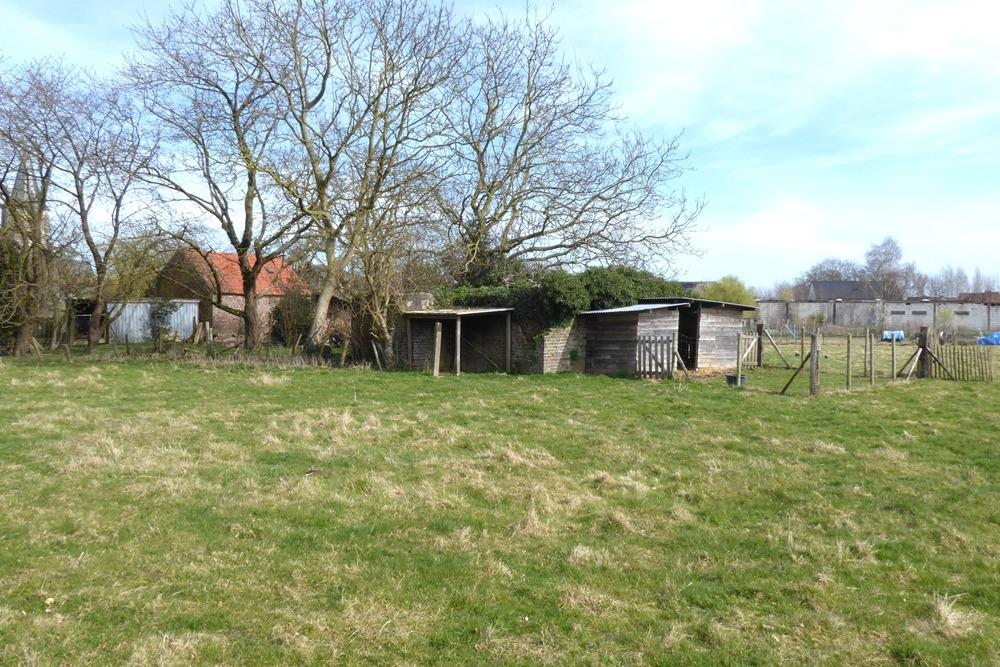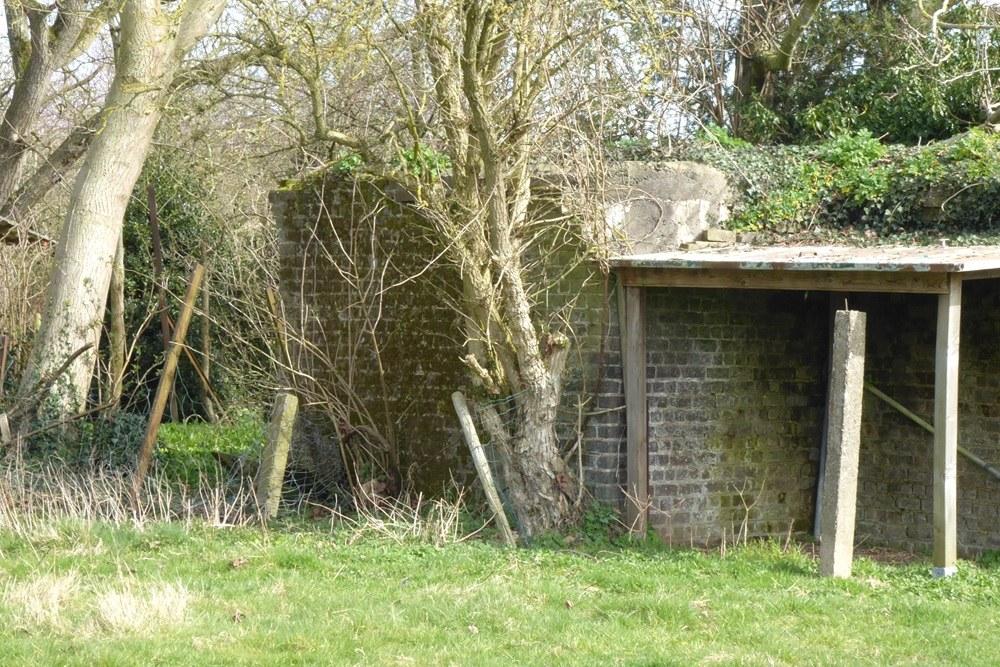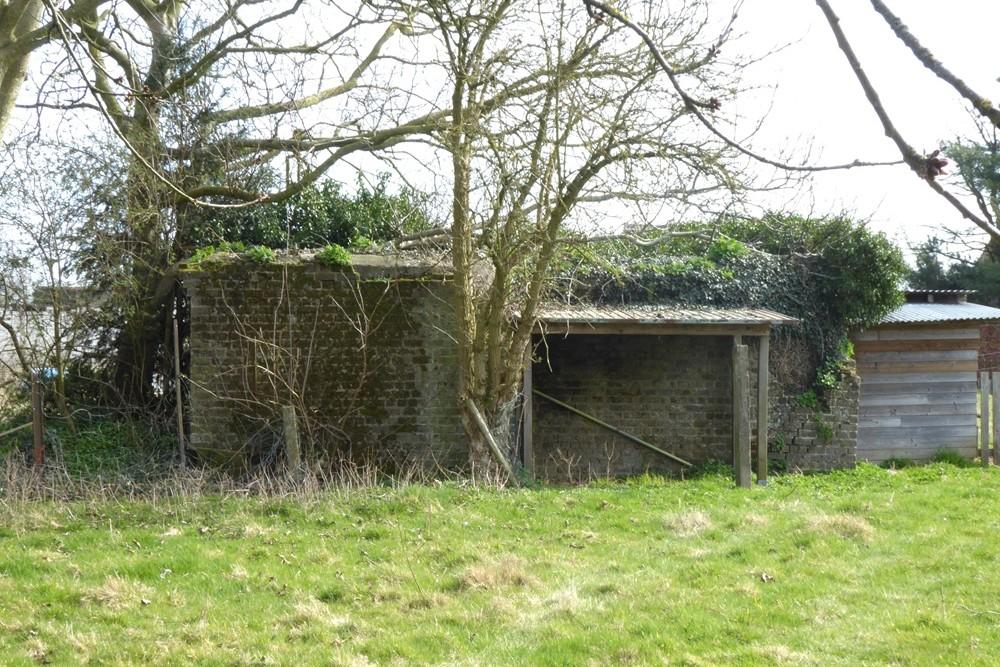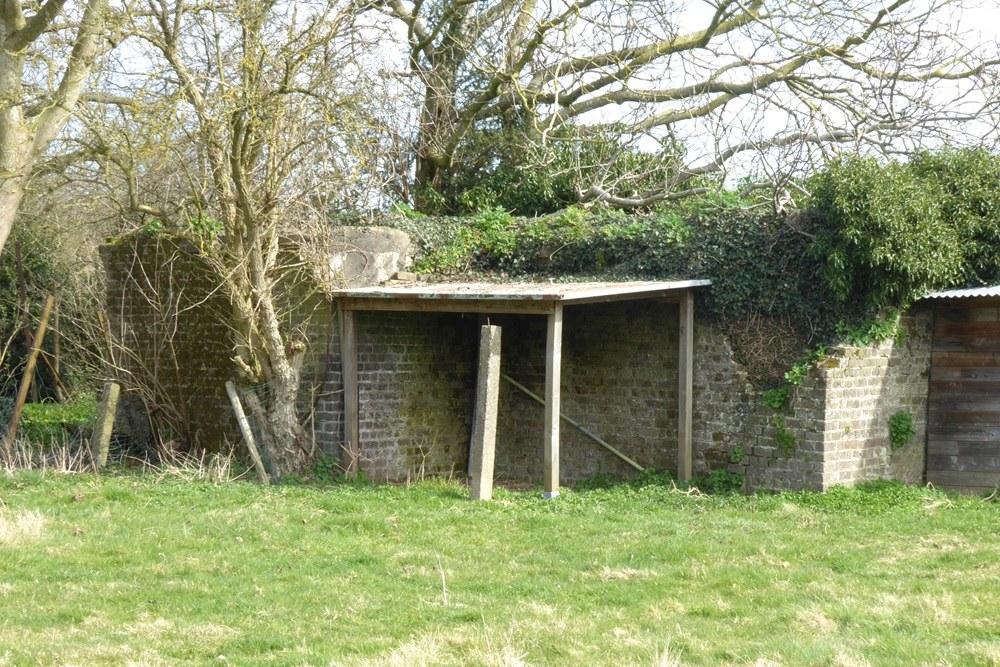Bunker Belt Bruggenhoofd Gent – Front Line Bunker Se7
Belgian bunker, part of the Ghent Bridgehead. This defensive position was constructed between 1934 and 1938, eight kilometres south of Ghent. Its construction was part of the fortification policy that Belgium pursued after the First World War.
The actual bridgehead consisted of two resistance nests – Betsberg and Muntekouter – and three strong points – Semmerzake, Eke and Astene.
The resistance nests and strong points were connected to each other by a curtain consisting of three defence lines.
There were 18 bunkers on the territory of Semmerzake. Three of them have been demolished, one has been dug in. Of the others, some are on private property or are overgrown.
Se7 was the northernmost front line bunker on the Semmerzake strongpoint.
It was aimed at the Semmerzake mill and fired on the eastern field.
The bunker was completely camouflaged with bricks and had a saddle roof covered with red Boom roof tiles. The two loopholes were hidden behind 2 metal shutters, and several false windows were also fitted.
The whole thing was reminiscent of a small worker's house.
The bunker consisted of two rooms, connected at the back by an access sash. It was only intended for the installation of two Maxim machine guns.
Se7 is located in the centre along a small alley, it is located in the garden behind a house and is clearly visible from the path.
Extensive information about this bunker belt can be found on the site Bunkergordel Bruggenhoofd Gent. It also contains photos, plans and technical data of the bunkers. A map shows the locations per municipality.
Do you have more information about this location? Inform us!
Source
- Text: TracesOfWar
- Photos: Marie-Christine Vinck
Nearby
Point of interest
- Information Board Battle of Gavere Semmerzake - Semmerzake (Gavere)
- Remains Eiserne Halle Scheldewindeke - Scheldewindeke (Oosterzele)
Monument
- Memorial Battle of Gavere - Semmerzake (Gavere)
- War Memorial Semmerzake - Semmerzake (Gavere)
- War Memorial Cemetery Gavere - Gavere
Cemetery
- Belgian War Graves Semmerzake - Semmerzake (Gavere)
- Commonwealth War Grave Gavere - Gavere
- Belgian Graves Veterans Gavere - Gavere
Remembrance Stone
- Stumbling Stone Kortrijksesteenweg 890 - Gent
- Stumbling Stone Monterreystraat 63 - Gent
- Stumbling Stone Fortlaan 93 - Gent









